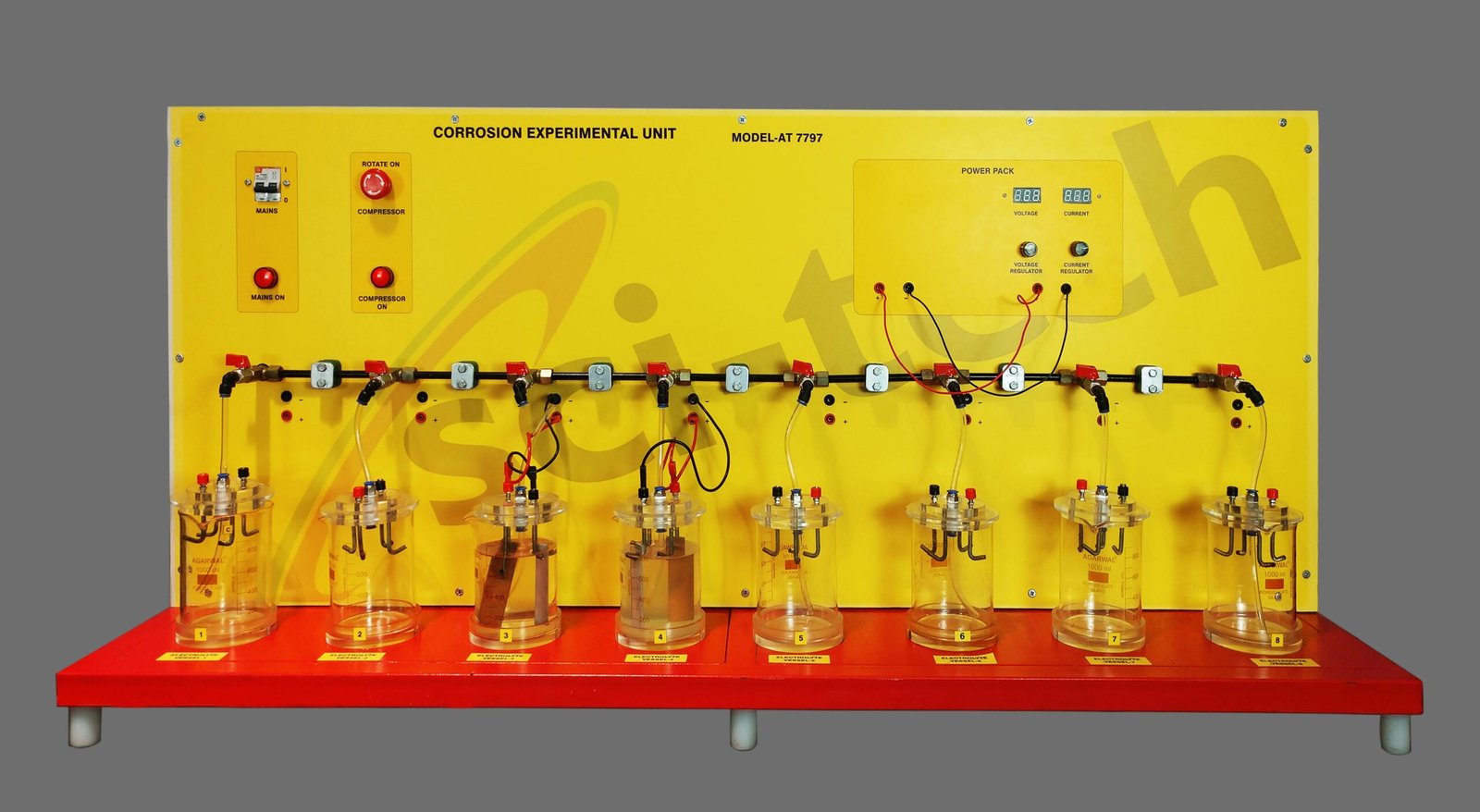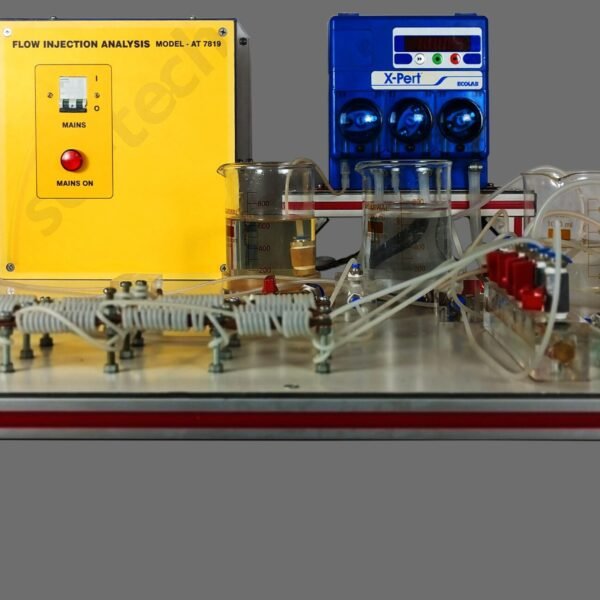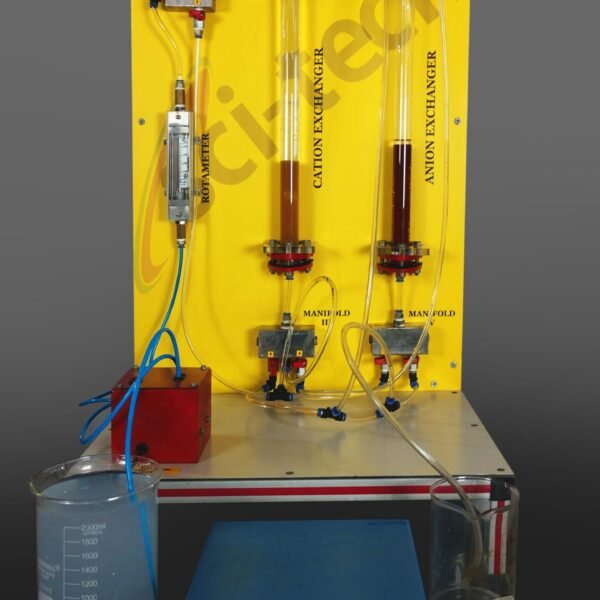Corrosion Experimental Unit Model TH 167
– principles of corrosion and corrosion protection on metallic materials
– oxygen corrosion
– electrochemical corrosion (local elements)
– corrosion protection with external voltage and sacrificial anodes
Corrosion damage to metallic components causes considerable economic and technical damages. The issue of corrosion and corrosion protection therefore plays an important role in technical training.
Sci-tech Corrosion Experimental Unit Model TH 167 allows a variety of factors that influence corrosion processes to be investigated in parallel. Eight glass vessels are available to do this. They allow different materials to be compared under different conditions. The required electrolyte solution is added to the vessels. Up to six specimens can be attached to the cover of each vessel and these are immersed in the solution.
It is possible to connect specimens to an electrical conductor to investigate local elements and the principle of sacrificial anodes. An adjustable power pack allows an external voltage to be connected. This counters the current flow between precious and base metals in local elements. As result the corrosion rate of the more base metal is reduced.










